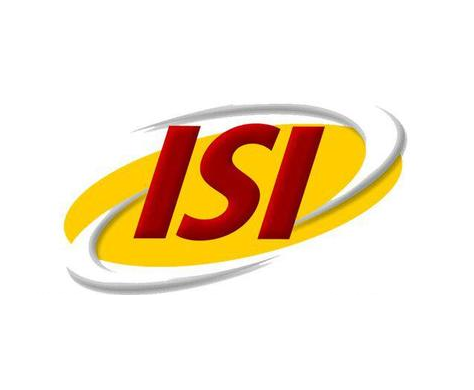دانلود رایگان مقاله لاتین آب صنعتی از سایت الزویر
عنوان فارسی مقاله:
تجزیه مصرف آب صنعتی در سالهای 2003 تا 2012 در تیانجین، چین
عنوان انگلیسی مقاله:
Decomposition of industrial water use from 2003 to 2012 in Tianjin, China
سال انتشار : 2016

برای دانلود رایگان مقاله آب صنعتی اینجا کلیک نمایید.
بخشی از مقاله انگلیسی:
3. Qualitative analysis of industrial water use in Tianjin
3.1. General analysis According to the history of developed countries, industrial water use in an area will not continue to increase. More specifically, when the economy develops to a certain stage, industrial water use will stop growing and will exhibit a downward trend. For example, industrial water use began to decline in Sweden in 1964, Japan in 1974, and the United States in 1981. The relationship between industrial water use and economic development can be depicted by the Kuznets curve. China is experiencing rapid industrialization and has experienced a decline in industrial water use in some of its economically developed areas, including Tianjin. Fig. 4 depicts Kuznets curves based on the relationship between industrial water use and per capita GDP from 1990 to 2012. The changes in industrial water use in Tianjin differed from those in other economically developed regions. Water use peaked in Tianjin when the per capita GDP reached 15,000 yuan, lower than that in Beijing (20,000 yuan). Beijing is the capital of China, and China has heavily invested in Beijing to promote water-saving measures and technology. Currently, in terms of industrial water use per 10,000 yuan, Tianjin is performing similarly to Beijing. However, the funds invested in water-saving in Tianjin are much less than in Beijing. In other words, without favorable economic conditions, Tianjin achieved a decline in industrial water use before Beijing by adopting more stringent water control measures and more advanced water-saving technologies. Nevertheless, the potential for additional water savings is rather limited without more financial support. Tianjin's industrial water use increased more gradually after the rapid growth and slow decline stages compared with that of developed areas such as Beijing. In 2008, Tianjin's industrial water use reached its lowest level of 380 million m3 . As Tianjin entered a stage of rapid economic development and the per capita GDP maintained an annual growth rate of 14.2% from 2008 to 2012, industrial water use began to rise owing to the rapid expansion of the industrial scale. Given that the demand for water owing to socioeconomic development far exceeds supply, industrial water use is bound to increase in Tianjin. Long-term zero growth is unlikely in water-rich areas such as the United States and Japan. 3.2. Driving force analysis Tianjin's industrial water use is subject to change within multiple constraints, including industrial scale expansion, water-saving technological upgrades, and available water resources. This study focuses on the period of 2001 to 2012, with particular attention given to industrial adjustments during the second round of reforms (2003–2012). To better grasp the law of long-term industrial development in Tianjin, we also analyze data from the first round (1994–2002). 3.2.1. Output-driven force We introduce industrial output as an indicator to describe the scale of industrial development in Tianjin, producing output-driven force. Increasing output is the most direct driving force of the upward trend of water use. In the absence of other driving forces, industrial water use is directly proportional to industrial output. To facilitate longitudinal comparisons, the industrial output values for all years are converted using the constant price index of 1990. The Tianjin Statistical Yearbook (Statistical Bureau of Tianjin, 1995–2013) and Tianjin Water Resources Bulletin (Tianjin Water Authority, 1995–2013) provide the total industrial output from 1994 to 2012, according to which the industrial water use and total industrial output chart are provided in Fig. 5. Although there is no obvious linear relationship between industrial output and water use, three distinct correlation stages are apparent in Fig. 5 based on industrial output. As shown in Fig. 5, when industrial output is low, it is negatively correlates with water use amid industrial restructuring. In the intermediate stage, when the industrial output appears to be increasing, the amount of water use does not significantly change owing to improvements in water use efficiency and the industrial scale. In the final stage, water use positively correlates with industrial output, mainly owning to the expansion of the industrial scale, indicating no room for improvement in water savings.
برای دانلود رایگان مقاله آب صنعتی اینجا کلیک نمایید.
کلمات کلیدی:
Decomposition of driving effects for industrial water utilization change ... www.dlyj.ac.cn/EN/10.11821/yj2010020007 Decomposition of driving effects for industrial water utilization change and spatial-temporal difference in Liaoning Province. SUN Cai-zhi1,2, WANG Yan2. 1. Decomposition of water with industrial oxygen sens..|INIS https://inis.iaea.org/search/search.aspx?orig_q=RN:27039394 by PL Carconi - 1995 - Cited by 1 - Related articles Industrial solid state oxygen sensors, using fully stabilized zirconia as electrolyte, were modified and used to split water vapor, mixed with inert gas. Water Sources Diagram in Multiple Contaminant Industrial Case Studies pubs.acs.org/doi/abs/10.1021/acs.iecr.5b01749 by EES Calixto - 2015 - Cited by 1 - Related articles Sep 29, 2015 - The use of water in industrial processes has become an important issue over ... A problem decomposition approach for developing total water ... Kinetics of Glucose Epimerization and Decomposition in Subcritical ... pubs.acs.org/doi/abs/10.1021/ie960250h by BM Kabyemela - 1997 - Cited by 330 - Related articles May 5, 1997 - Glucose decomposition kinetics in subcritical and supercritical water ... the Agri-Food Industry by Subcritical Water Hydrolysis Assisted by CO2. Hierarchical prediction of industrial water demand based on refined ... wst.iwaponline.com/content/early/2017/07/20/wst.2017.432.full.pdf Jul 20, 2017 - industrial structural adjustments, and used to predict water demand for the .... model to decompose Tianjin's industrial water usage into.
